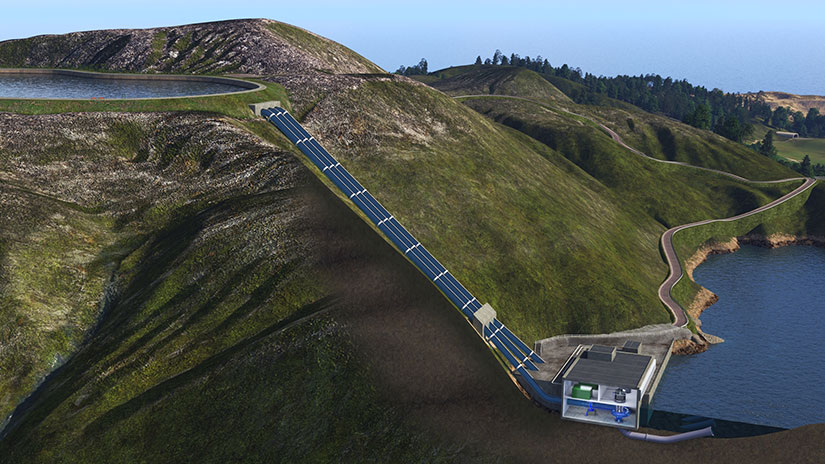New NREL Tool Estimates Lifetime Greenhouse Gas Emissions of the Most Well-Established Grid-Scale Energy Storage Technology
Hydropower Developers and Operators Can Use the Tool To Select Sites, Components, and Specifications That Minimize Emissions

The National Renewable Energy Laboratory (NREL) has developed a first-of-its-kind tool that enables hydropower operators and developers to estimate the greenhouse gas emissions associated with building and operating closed-loop pumped storage hydropower (PSH) facilities.
Closed-loop PSH generates and stores electricity by moving water between an upper and lower reservoir. It is an established technology that accounts for most of today’s grid-scale energy storage.
As part of the clean energy transition, low-carbon renewable energy sources such as solar and wind are being rapidly deployed on the electric grid. However, because these generation sources are variable, grid-scale energy storage is needed to help balance energy supply and demand.
It is also important for the construction and operation of the storage technology to be low carbon. With PSH, for example, there can be greenhouse gas emissions due to diesel-powered construction equipment, the use of concrete and steel, and the local grid electricity mix powering the pump to move water to the upper reservoir.
In 2023, an NREL research team published a study showing that PSH is the smallest emitter of greenhouse gases compared to four other grid-storage technologies—compressed-air energy storage, utility-scale lithium-ion batteries, utility-scale lead-acid batteries, and vanadium redox flow batteries. The finding suggests that PSH could offer substantial climate benefits by playing a key role in accommodating wind and solar generation.
Recognizing this potential, the NREL team used the data and methods from the 2023 study to create the Pumped Storage Hydropower Life Cycle Assessment tool. PSH developers and anyone interested in PSH deployment can use this web-based, interactive application to determine the greenhouse gas emissions of a PSH facility over its lifetime. Lifetime emissions vary depending on numerous site-specific factors, such as construction materials, components, and especially the grid electricity mix used to operate the facility.
Users can input specifications for PSH facilities at varying levels of detail. Examples of specifications include the reservoir volume, dam material and dimensions, number and capacity of turbines, and length of the transmission line that connects the PSH system to the grid. Users can compare different PSH scenarios side-by-side and view the emissions by component, material, and life-cycle phase. The idea is to help users determine the sites, specifications, and configurations that minimize emissions.
“The tool’s ultimate goal is to show how PSH can contribute to overall greenhouse gas emissions reductions and make the clean energy transition as clean as possible,” Stuart Cohen said.
The U.S. Department of Energy Water Power Technologies Office supported the development of the tool.
Access the Pumped Storage Hydropower Life Cycle Assessment tool and learn how to use it. Have questions about the tool or want to collaborate with NREL on PSH project development? Contact Stuart Cohen.

